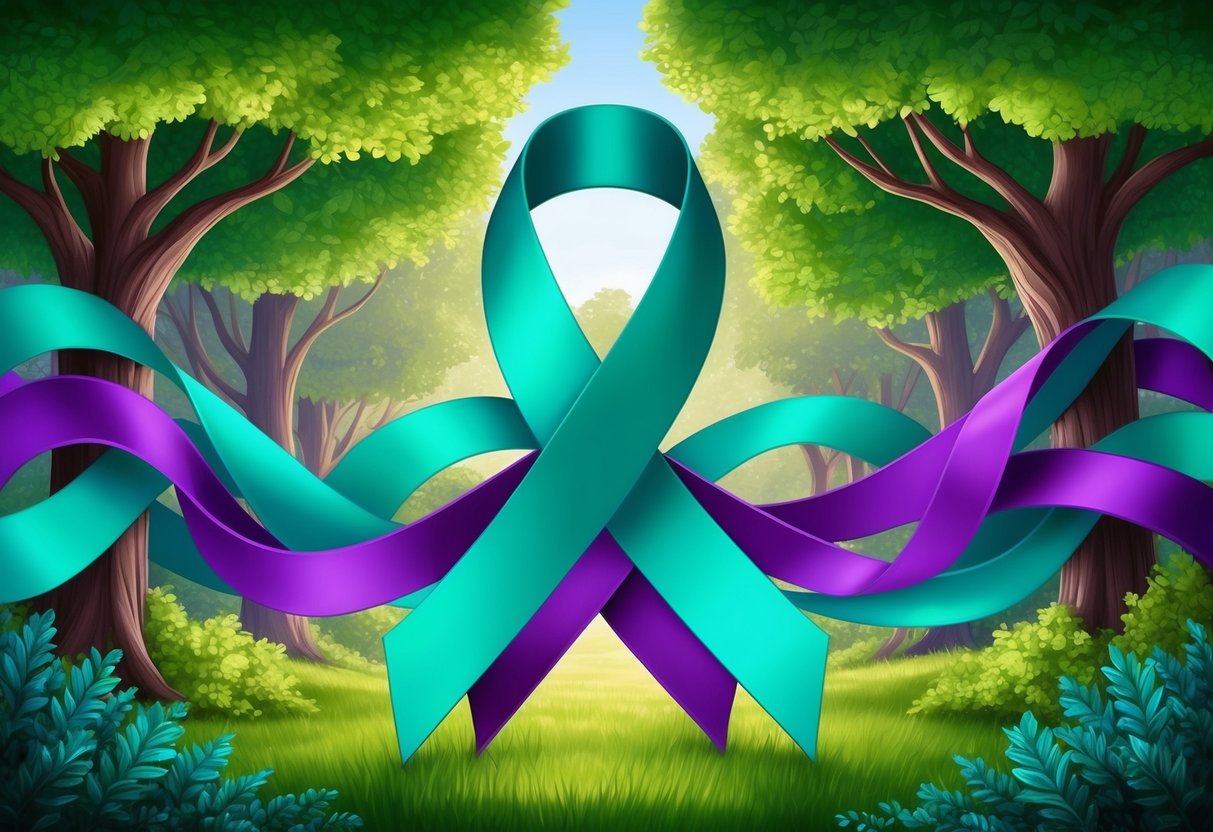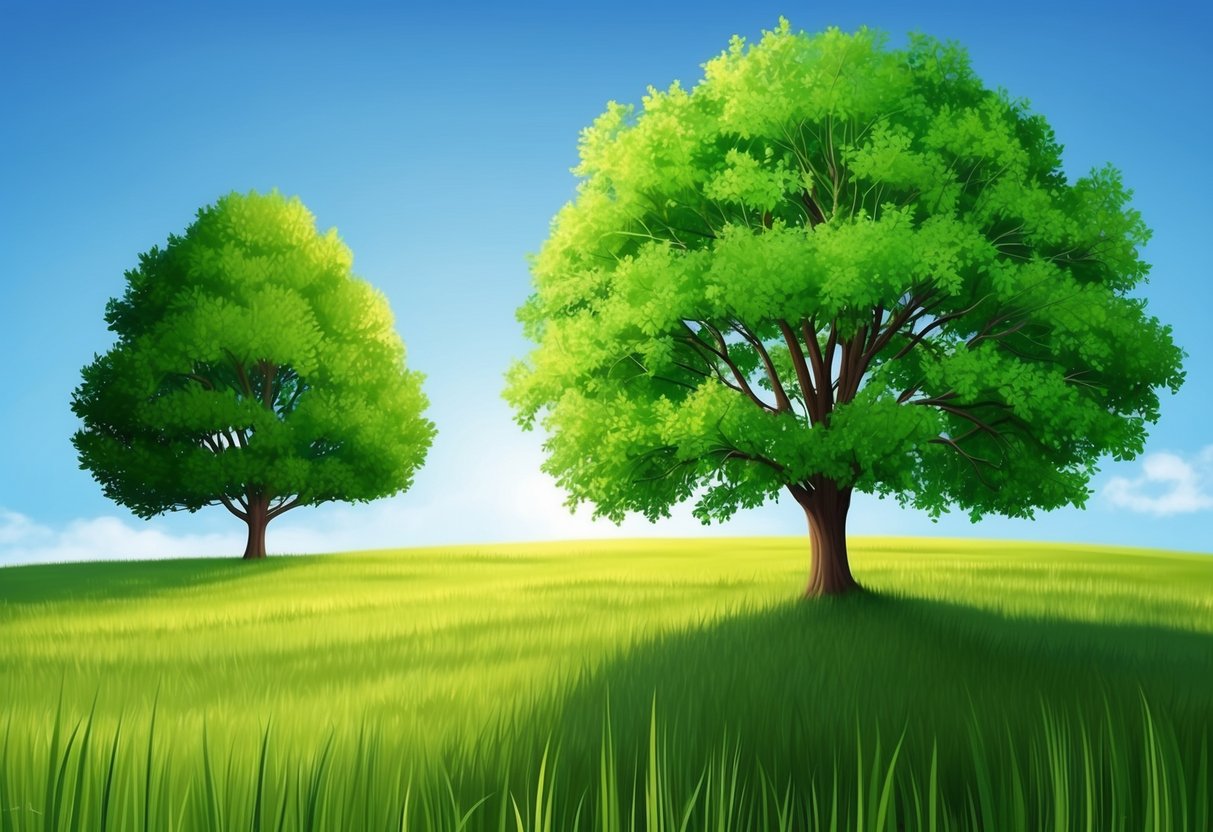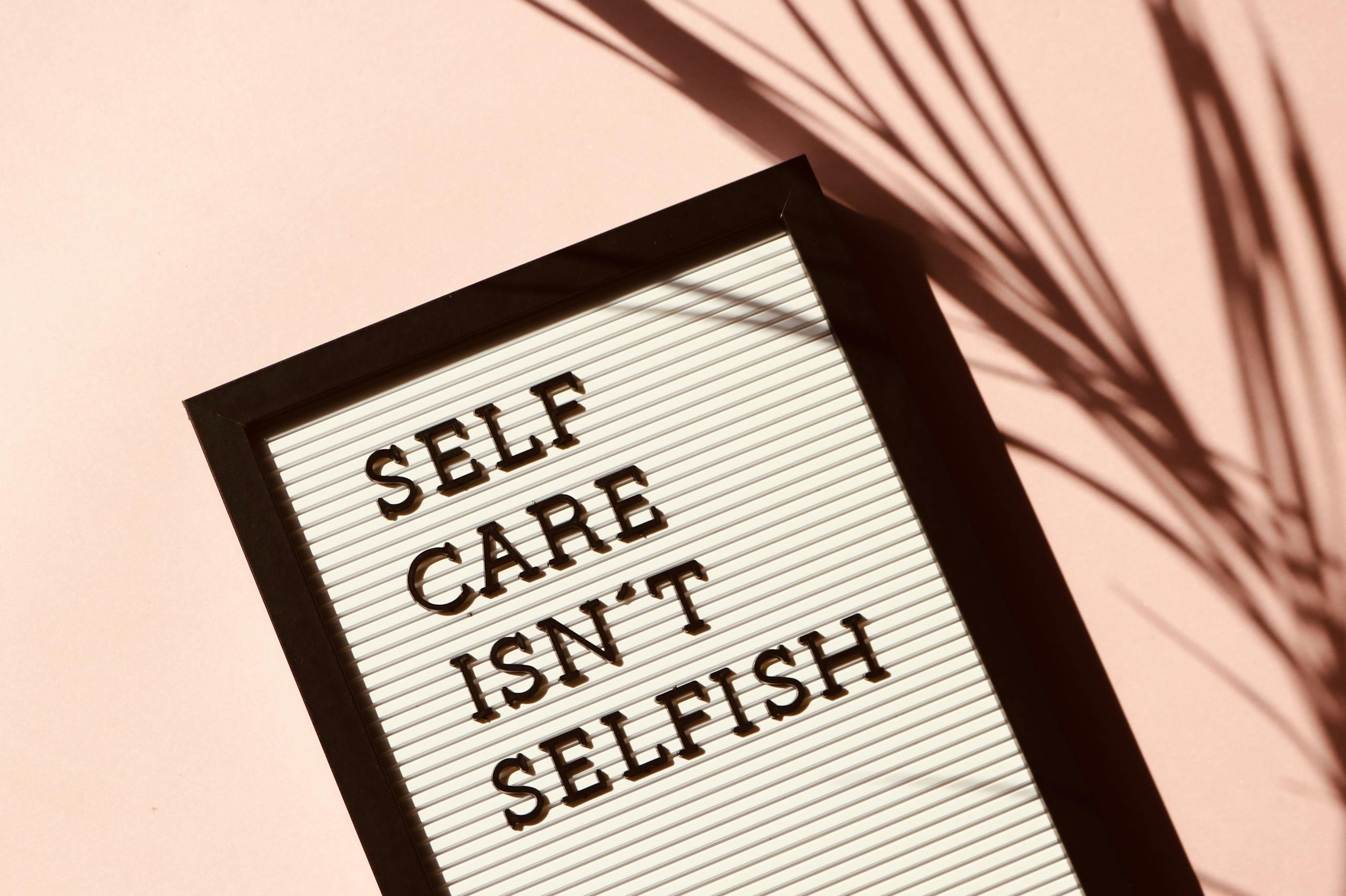When it comes to mental health, the color green often represents balance, growth, and hope. This color is widely recognized for its connection to nature and its calming effect.
Green is used to support mental health awareness, symbolizing healing and renewal.
Table of contents
- The Significance of Color in Mental Health
- Specific Colors and Their Impact
- Color Therapy and Chromotherapy
- Color in Our Environment and Daily Life
- Psychological and Physiological Effects
- Colors in Mental Health Awareness and Advocacy
- Research and Case Studies
- Future Directions and Emerging Trends
- Frequently Asked Questions
Colors play an intriguing role in how you perceive and feel about the world around you.
For example, blue brings a sense of calm and peace, while yellow can inspire hope and positivity. These colors help communicate different mental health themes and support various psychological aspects.
Knowing how colors affect emotions can deepen your understanding of their importance in mental health.
Recognizing these color associations can be a valuable tool for self-awareness and fostering a positive mindset.
The Significance of Color in Mental Health

Color plays a crucial role in shaping your emotions and perceptions. In mental health, the choice of colors can influence your mood, making it essential to understand their psychological effects.
This section delves into how colors connect with emotions and their impact on mental well-being.
Connecting Colors With Emotions
Every color can evoke certain emotions or feelings. Warm colors, like red and orange, often bring about energizing and exciting feelings. They are known to evoke positive emotions and are linked to warmth and comfort.
On the other hand, cool colors, such as blue and green, promote calmness and relaxation. These colors are often used in environments aimed at reducing stress and creating a peaceful atmosphere.
Neutral colors, like gray or brown, can sometimes result in indifferent or even negative emotional responses. They are less likely to alter your emotional state significantly but can provide balance among more vibrant colors.
Understanding these connections helps you to make more informed decisions when using colors in your personal space or clothing.
Color Psychology Basics
Color psychology is the study of how colors affect behavior and emotions. It revolves around the idea that colors can influence your mood and decision-making process.
For example, the color green is commonly associated with growth and renewal.
Color psychology also considers cultural differences. While some colors are universally connected with certain feelings, others might be interpreted differently based on your cultural background.
Artists and interior designers have long used these insights to create spaces that evoke specific emotions.
Whether you’re painting a room or selecting what to wear, being aware of these influences can help you choose colors that align with the emotional effect you desire.
Color Choices and Perceptions
The colors around you can significantly impact your perceptions, even subconsciously. In mental health settings, calming colors like blue and green are often chosen to create a soothing environment. Color choices can also affect how you perceive other people and how they perceive you.
Selecting the right colors in your personal life can improve your well-being. Wearing yellow might brighten your mood, while opting for blue can make you feel more tranquil.
Additionally, using certain colors in therapy, known as color therapy, is gaining attention for its potential to improve mental health outcomes.
By understanding the psychological impact of different hues, you can make deliberate choices that positively affect your mood and mental state.
Specific Colors and Their Impact

Colors can greatly affect your mental state. Each color carries its own psychological influence, playing a role in altering mood and emotional health. Understanding these effects can help you make mindful choices in your surroundings and lifestyle.
Warm Colors and Their Psychological Qualities
Warm colors like red, yellow, and orange are typically energizing. Red can provoke feelings of excitement or intensity. While it might boost energy, too much red can also lead to feelings of stress or agitation.
Yellow is often associated with happiness and optimism. It can create a cheerful atmosphere but is also linked to frustration and impatience if overused.
Orange blends the properties of red and yellow, offering stimulation and friendliness. This color can help you feel enthusiastic and sociable, with a welcoming vibe.
Cool Colors and Emotional Regulation
Blue, green, and purple often instill a sense of calm and relaxation. Blue is seen as calming and peaceful. Many people find blue reduces stress and increases productivity.
Green is often linked to nature, symbolizing growth and tranquility. It can create a balanced and peaceful mood, promoting rest and recovery.
Purple represents luxury and creativity, offering a unique mix of calm and stimulation. It can enhance imaginative thinking while maintaining serenity.
Neutral Colors and Mental Wellbeing
Neutral colors, such as black, gray, white, and brown, can have a subtle impact on your mental wellbeing. Black often represents sophistication but can also imply sadness or heaviness.
Gray is a balanced color that might feel neutral but can also seem isolating. It supports focus without bringing too much attention.
White stands for purity and simplicity, giving a feeling of openness and clarity. However, an excess of white can appear cold or stark.
Brown connects with stability and reliability. Its earthy quality can foster feelings of safety and comfort.
Color Therapy and Chromotherapy

Color therapy, also known as chromotherapy, is an ancient healing practice that uses color and light to balance the mind and body. It has its roots in traditions like those of ancient Egypt and has evolved into various modern applications.
Historical Overview
Color therapy’s origins can be traced back to ancient civilizations, including Egypt. The Egyptians utilized sunlit rooms adorned with colored glass to aid in healing.
This approach to health was part of their spiritual practices, where color and light intertwined with religious beliefs. Different colors were linked to specific spiritual and physical benefits.
In other ancient cultures, such as those in China and India, color was also pivotal in healing practices. These early societies believed in the energetic properties of colors, associating them with various benefits for well-being.
Modern Applications in Mental Health
Today, color therapy is used to address mental health concerns. Modern chromotherapy emphasizes using colors to stimulate or calm the mind.
For instance, bright colors like yellow may uplift your mood, while blues and greens can help with relaxation.
Therapists often incorporate color therapy into broader treatment plans, pairing it with techniques like acupuncture or aromatherapy.
The aim is to enhance the therapeutic impact and address emotional and mental stress.
Understanding the psychological impact of colors allows you to harness their power. By choosing specific colors, you can create environments or select therapies that support mental health needs effectively.
Color in Our Environment and Daily Life

Color plays a pivotal role in shaping our experiences and emotions. Its influence can be seen in various areas like the spaces we live and work in, and in the ways businesses communicate through branding and marketing.
Design and Living Spaces
Colors in your living space can have a big impact on mood and comfort. Warm shades, like yellow and orange, can create a welcoming and cheerful atmosphere. Blue and green tones, known for their calming qualities, can make your home feel peaceful.
Choosing the right color for a room can help set the tone for its purpose. For example, neutral colors like beige or gray are often used in living rooms to provide a versatile backdrop. This choice allows you to change up accents and decor without clashing.
Consider how you use each space and what emotions you want to foster when picking colors. For instance, calming colors in a bedroom can encourage relaxation and restful sleep.
Workspaces and Productivity
Colors in your workspace can affect your productivity and focus. Bright and vibrant colors, like red and yellow, may boost energy levels and creativity. However, too much intensity might be distracting.
Subtler tones such as blue and green can enhance concentration and help maintain a calm environment, making them popular choices for offices. These colors can promote a balanced mood, which is essential during work hours.
Using color strategically can foster an atmosphere that supports specific tasks. For example, a pop of orange might be introduced in collaborative areas to encourage enthusiasm and teamwork.
Branding and Marketing Colors
Color plays a crucial role in branding and marketing by influencing how consumers perceive a brand. Companies use colors to evoke emotions and convey messages.
For example, red can symbolize passion and urgency, while blue often represents trust and stability.
Understanding color psychology helps businesses decide which hues align with their brand identities. This creates an emotional connection with their target audience.
For instance, eco-friendly brands may use green to reflect their commitment to nature and sustainability.
When designing a brand, considering your target market’s color preferences can influence purchasing decisions. The right palette can make a brand more recognizable and appealing, helping to build stronger customer relationships.
Psychological and Physiological Effects

Colors influence how you feel emotionally and physically. Certain hues can affect mood, energy levels, stress, and even physiological factors like heart rate and blood pressure.
Influence on Mood and Mental Health
Colors play an important role in altering mood and mental health. Happy colors like yellow and orange can make you feel more optimistic and uplifted. Shades of blue and green are calming, helping to reduce stress and anxiety. Red can evoke excitement or aggression, increasing energy levels.
It is crucial to choose colors wisely in your surroundings as they can impact your emotional well-being.
Certain conditions like depression or anxiety can be influenced by the colors you are exposed to daily. For example, softer tones might make a more relaxed atmosphere, while brighter hues can provide an energy boost when needed.
Paying attention to how different colors affect your feelings can lead to better mental health.
Colors Impact on Physical Health
Colors can also affect physical health. Red, for example, is known to increase heart rate and elevate blood pressure. This can be energizing and improve concentration but may not be ideal for relaxation.
Conversely, blue and green are often associated with lowering heart rate and promoting relaxation. These colors can also improve focus and aid in better sleep by increasing melatonin production.
Colors also have an impact on immunity. Warm shades like yellow can help you feel more active and contribute to an overall sense of well-being, whereas exposure to calming colors might aid in stress reduction.
This can positively affect immunity over time.
Colors in Mental Health Awareness and Advocacy

Colors are powerful tools in mental health awareness and advocacy, with each shade carrying specific meanings. Green is the most recognized color for mental health, symbolizing healing and hope.
Understanding Mental Health Awareness Colors
Different colors are used in mental health awareness, each representing various aspects of mental health conditions. Green is particularly significant and widely recognized as the symbol for mental health awareness. It represents new life, renewal, and growth.
Purple, while associated with Alzheimer’s and epilepsy, can sometimes indicate ADHD and other conditions. Meanwhile, blue often reflects calm and peace, aiding emotional regulation.
These colors contribute to raising awareness, offering support, and reducing stigma, making them vital in advocacy efforts.
Symbolism and Usage of the Green Ribbon
The green ribbon holds a special place in mental health awareness efforts. It symbolizes hope, strength, and the possibility of recovery.
Originating from the idea of renewal and life, green embodies the journey toward mental wellness.
Wearing a green ribbon or using green in campaigns signifies solidarity with those experiencing mental health challenges. This color is commonly used in events aimed at reducing stigma and promoting suicide prevention.
By integrating green into personal attire or spaces, you show support for the mental health community and emphasize the importance of seeking help and fostering growth.
Research and Case Studies

Research has explored the connection between color and mental health. Clinical studies indicate color may affect emotions like joy and depression. Meanwhile, some consider the placebo effect when evaluating color therapy.
Clinical Studies on Color Psychology
Clinical studies on color psychology focus on how colors affect emotions and mental health. Researchers found that blue has a calming effect, which might help with stress reduction and anxiety. In contrast, bright colors like red and yellow are often linked to feelings of joy and increased energy.
Depression and other mental illnesses may also be influenced by color. For example, exposure to natural light and bright colors often benefits those with Seasonal Affective Disorder (SAD). These colors can enhance mood and combat winter depression. Some studies suggest green and nature-related colors promote relaxation and well-being. Not all studies agree, but evidence suggests that color has a significant impact on emotional states.
The Placebo Effect in Color Therapy
The placebo effect plays a role in color therapy, as individuals believe certain colors will improve their mental health. This effect can lead to real changes in mood and behavior. The power of suggestion is strong. When people expect a particular color will help reduce stress or lift depression, they might experience these improvements due to their beliefs.
Color therapy often uses strategically chosen colors with the intention of improving conditions like bipolar disorder or stress reduction. While scientific proof remains limited, some people report positive outcomes with this approach. It’s crucial to combine color therapy with traditional treatments and consultations with healthcare professionals for the best results.
Future Directions and Emerging Trends

Emerging trends in mental health explore the use of new color technologies and research, focusing on colors to help address mental health challenges. These advancements harness the power of color to influence mood, energy, and emotions.
Innovations in Color Technology
Technology is transforming how we use color in mental health care. Blue light, for example, can affect sleep and energy levels.
Color technology, such as LEDs, is being used to manage mood and enhance creativity. Smart lighting systems can adapt throughout the day, syncing with natural circadian rhythms. These innovations draw on color theory, enabling personalized environments that promote psychological well-being.
Decor and art might incorporate technology to provide stress relief, supporting mental health with evidence-based practices.
Mental Health Challenges and Color Research
Researchers are investigating the role of color in addressing mental health challenges. The psychological qualities of colors like green and blue are linked to calmness and stress reduction.
Color associations can influence emotional states and coping mechanisms. Studies explore how colors might alleviate anxiety or boost focus. Understanding these effects helps develop therapies that use color effectively, creating supportive environments.
Future research might examine how color influences specific disorders, providing insights into tailored interventions. By connecting color with emotional health, new strategies can emerge in therapy settings.
Frequently Asked Questions

Mental health awareness often involves using specific colors and symbols. Green ribbons and flags are commonly associated with mental health. Here are some key questions and answers related to these symbols.
Why is the color green associated with mental health awareness?
Green represents mental health because it signifies renewal, growth, and hope. It’s a vibrant reminder of life and healing. Many organizations use green to promote awareness and support for mental health issues.
What symbols are commonly used to represent mental health awareness?
Symbols like the green ribbon are widely recognized. They serve as a visible commitment to supporting mental health initiatives. These symbols help spread awareness and reduce stigma.
How can one show support for mental health awareness month?
You can show support by wearing green ribbons, attending awareness events, and participating in campaigns. Sharing information on social media and engaging in open conversations about mental health also makes a positive impact.
Where can one find mental health awareness ribbons for purchase?
Mental health awareness ribbons can be found online through various retailers and non-profit organizations. Purchase from businesses that support mental health causes to ensure your contribution aids relevant initiatives.
What is the significance of wearing a green ribbon for mental health?
Wearing a green ribbon shows solidarity with individuals facing mental health challenges. It’s a simple yet powerful gesture that promotes understanding and compassion. The ribbon also helps raise awareness and encourages dialogue.
Can you explain the meaning behind the mental health awareness flag?
The mental health awareness flag often features shades of green. Each shade can symbolize different aspects of mental health, like growth and hope. Flags are used in events and campaigns to unify efforts in raising mental health awareness.



